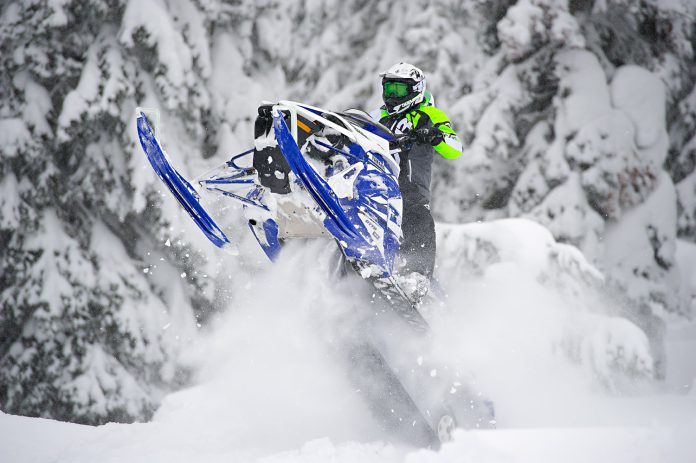Whenever we mention Yamaha’s mountain sleds there’s plenty of tongue-clucking and hissing about how 4-strokes are too heavy to be decent verts.
We have to agree that 4-stroke weight isn’t always a hardcore mountain rider’s best friend, however, 4-strokes are all Yamaha builds and by utilizing Arctic Cat’s pretty advanced mountain chassis tech, sleds like the SideWinder M-TX are actually impressively proficient in most mountain situations.
The truth is, Yamaha’s mountain program has seen some very real advancements in the last two years. Most of this is in chassis development because of Yamaha’s engineering partnership with Arctic Cat.
If you look at the Yammer website you’ll learn there are virtually no mountain sleds using anything less than the 998cc turbo and there’s a reason for this: Power!
To a large degree, power cancels weight and 180-200 stallions can get you up and over a lot of deep snow and out of tricky situations, despite the extra weight you’re carrying.
Okay, I’m not trying to blow menthol on a situation most mountaineers are not going to buy into – and yes, I admit, for tricky maneuvering, side-hilling, powder hooks and generally challenging vertical events, a 2-stroke will get you through better nearly every time, but here’s where the SideWinder MT-X really gets traction (pun intended): Mountain climbing.
When it comes to pure unobstructed vertical climbs, there’s nothing better than a turbo. Not only do you not lose power as altitude increases, but the pure, brutal oomph of these 4-strokes makes them very appealing.
If you attend a hillclimb race, you’ll learn that sleds like the 9000 Cat and Yamaha SideWinder are in attendance and very evident.
We believe Yamaha is well aware it’s SideWinder M-TX program will not capture sales from the hardest of the hardcore vertical crowd, but there is a very real place for it – a place where it can actually excel.








